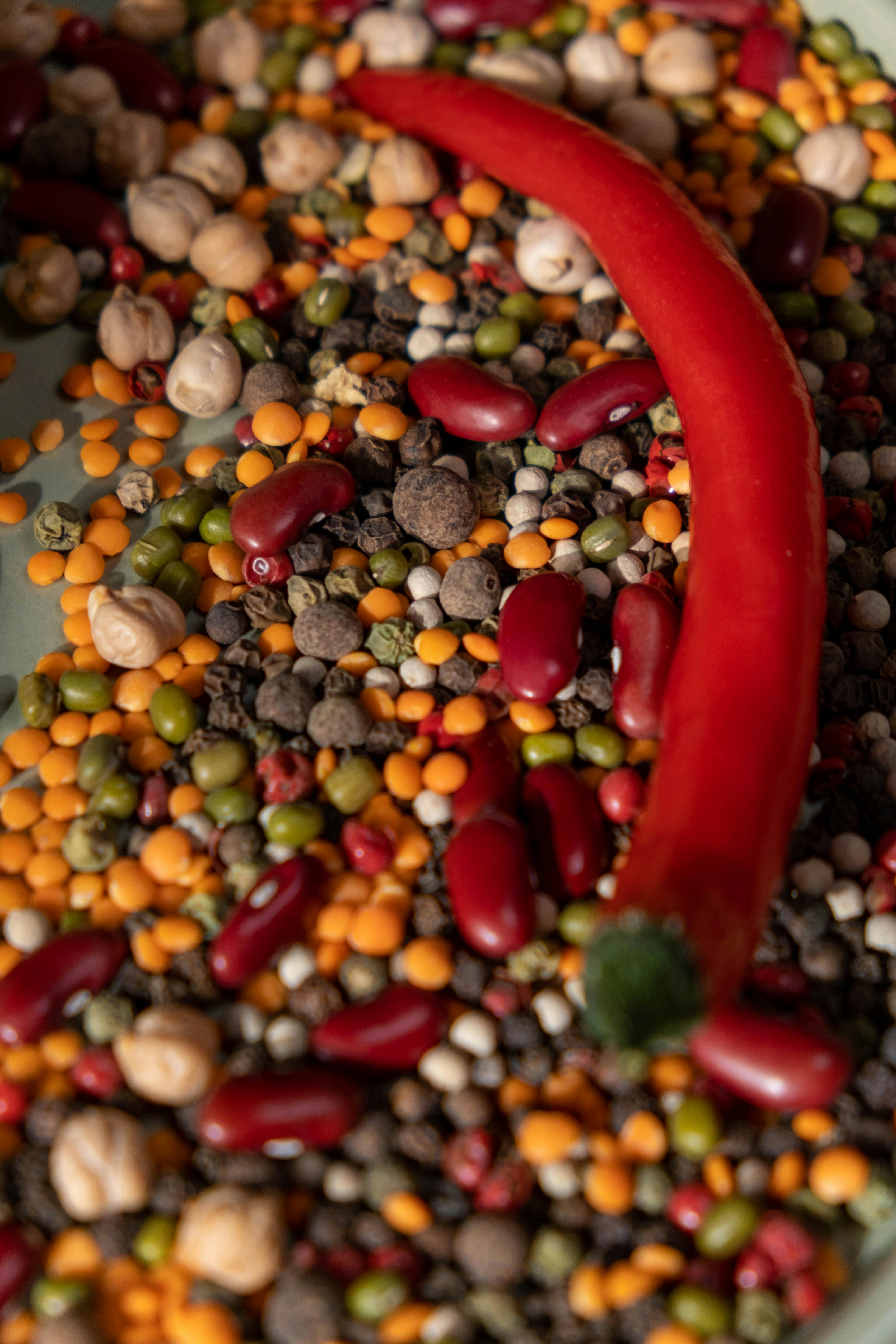Best 5 Options for Quinoa vs Couscous in 2025: Discover Nutritional Benefits!
Introduction to Quinoa and Couscous
As we navigate the evolving culinary landscape, quinoa and couscous continue to prevail as popular healthy meal options. Both are versatile grains that offer unique flavors and textures, making them excellent additions to our diets. Quinoa, an ancient grain, is celebrated for its high protein content and gluten-free status, while couscous, made from semolina wheat, is a staple in Mediterranean cuisine. The goal of this article is to explore the nutritional benefits of both quinoa and couscous, comparing their health advantages, cooking methods, and recipes to help you make an informed choice for your meals.
This article will examine the key nutritional aspects of quinoa and couscous, delve into their respective health benefits, and provide delicious recipe ideas. By the end, you'll have all the information you need to choose the right grain for your dietary needs and culinary desires.
Stay tuned for an exploration of the nutritional comparison, cooking techniques, and practical applications for both grains in your kitchen.
Understanding Quinoa and Its Benefits
Quinoa (Chenopodium quinoa) has gained immense popularity over the past decade as a nutritious grain rich in plant-based protein. It is regarded as a complete protein source because it contains all nine essential amino acids, making it an excellent choice for athletes and those seeking high protein grains. Additionally, quinoa benefits include a significant amount of dietary fiber, which promotes healthy digestion and can aid in weight loss.
Nutritional Highlights of Quinoa
In terms of its nutritional profile, a 1-cup serving of cooked quinoa provides approximately:
- 8 grams of protein
- 5 grams of dietary fiber
- 39 grams of carbohydrates
- 220 calories
This combination of nutrients not only supports overall health but also meets dietary needs for individuals following a plant-based diet.
Health Benefits of Quinoa
The health advantages of quinoa are numerous and well-documented. Quinoa's high fiber content aids in digestion, supports gut health, and can help regulate blood sugar levels, which is beneficial for those managing diabetes. Furthermore, its gluten-free benefits make quinoa a safe grain alternative for individuals with gluten sensitivity or celiac disease.
Popular Quinoa Recipes
When it comes to cooking quinoa, the options are endless. From quintessential quinoa salads to hearty quinoa bowls, this grain can be adapted to various cuisines and dietary preferences. Common quinoa recipes include:
- Quinoa Salad Recipes: Such as Mediterranean quinoa salads packed with fresh vegetables.
- Quinoa Stir-Fry: A quick, easy meal featuring quinoa and an array of colorful veggies.
- Quinoa and Bean Dishes: Combining quinoa with black beans for a protein-rich vegan meal.
Utilizing quinoa in your meal prep can elevate your culinary experience while promoting a healthy lifestyle.
Exploring Couscous and Its Nutritional Value
Contrasting quinoa, couscous is a North African staple made from tiny granules of semolina wheat. While often mistaken for a grain, couscous is technically a pasta. However, its quick cooking time and versatile flavor profile make it a favorite among home cooks. Couscous nutrition offers several health benefits and can be utilized in various dishes.
Nutritional Profile of Couscous
A 1-cup serving of cooked couscous provides approximately:
- 6 grams of protein
- 2 grams of dietary fiber
- 36 grams of carbohydrates
- 176 calories
While couscous may not boast as high a protein and fiber content as quinoa, it is still a nutritious option.
Health Advantages of Couscous
Couscous health benefits include being a low-fat option packed with carbohydrates, making it an excellent source of energy. Its quick cooking time allows for convenient meal preparation, making it a go-to for busy weeknights. Additionally, couscous can be a part of a healthy diet if consumed in moderation and paired with nutrient-dense ingredients like vegetables and lean proteins.
Couscous Serving Suggestions
Couscous can be served with a wide variety of ingredients to create delicious dishes. Here are some popular couscous dishes:
- Couscous Salad Recipes: Incorporating fresh herbs, vegetables, and a light dressing.
- Couscous and Vegetable Recipes: A colorful medley of seasonal vegetables sautéed with couscous.
- Couscous Bowls: Perfect for meal prep, these bowls can include proteins, greens, and sauces.
With its adaptability and ease of cooking, couscous continues to be a staple in many kitchens.
Quinoa vs Couscous: Nutritional Comparison
When comparing quinoa and couscous, it's essential to consider various factors such as their nutritional profiles, cooking methods, and culinary applications. Both grains offer unique benefits and can be incorporated into a balanced diet.
Protein and Fiber Content Comparison
As previously mentioned, quinoa is significantly higher in protein and fiber than couscous. Quinoa's complete protein make it ideal for those looking to increase their protein intake, while its fiber content supports digestive health. Conversely, couscous, while lower in these nutrients, provides a quick source of energy for those needing a fast meal option.
Cooking Methods and Times
Quinoa cooking time averages around 15-20 minutes, while couscous cooks in just 5-10 minutes. This quick cooking time makes couscous particularly appealing for those seeking a fast meal. However, both grains can be cooked using various methods, including boiling, steaming, or baking, depending on the specific recipe.
Flavor Profiles and Texture Differences
In terms of flavor, quinoa has a slightly nutty taste and chewy texture, while couscous is more neutral with a light, fluffy consistency. Pairing these grains with spices, herbs, and dressings can greatly enhance their flavors. For instance, quinoa pairs well with Mediterranean spices, whereas couscous can be flavored with saffron or lemon.
Cooking Tips for Quinoa and Couscous
Mastering the cooking techniques for both quinoa and couscous can significantly enhance your culinary results. Here are valuable quinoa cooking tips and couscous cooking methods to keep in mind:
Essential Quinoa Cooking Tips
To achieve fluffy quinoa, it's important to rinse it thoroughly before cooking. This removes the saponin, a natural coating that can taste bitter. Use a ratio of 1 cup of quinoa to 2 cups of water and bring to a boil. Once boiling, reduce to a simmer and cover for about 15 minutes. Let it sit covered for an additional 5 minutes before fluffing with a fork.
Couscous Cooking Methods
Cooking couscous is incredibly simple. Just add boiling water or broth to couscous in a bowl, cover, and let it steam for about 5 minutes. Fluff with a fork and season as desired. For added flavor, consider toasting couscous in a dry skillet before adding water.
Conclusion and Practical Meal Ideas
Ultimately, choosing between quinoa and couscous depends on your dietary needs and meal preferences. Both grains bring unique flavors and nutritional benefits to the table, making them fantastic options for a balanced diet.
For high-protein meals, lean towards quinoa. If you're short on time, couscous is a smart choice. Why not experiment with both? Consider creating a quinoa salad and a couscous dish for your next meal prep. Whichever grain you choose, make sure to explore the wide range of recipes available.
In conclusion, quinoa and couscous are nutritious grains that can provide various health benefits. Their versatility makes them suitable for multiple recipes, ensuring you'll always have exciting meal options. Embrace the culinary possibilities of these grains and come up with delicious creations in your kitchen!


